Scaffolding is a temporary structure used to support a work crew and materials to aid in the construction, maintenance and repair of buildings and other manmade structures. Although it is usually used as temporary structures and communicates a moment of construction and renovation, these projects suggest the great potential of scaffolding as a symbol of architecture, permanent and decorative.


M Pavilion by Dazhou and Associates
Architecture studio Dazhou and Associates has used a delicate scaffolding structure for a small coffee shop situated within the lobby of an office building in Xuhui district, Shanghai. Named M Pavilion, the project was commissioned by M Stand, a trendy coffee chain brand.


M Pavilion by Dazhou and Associates
The architects came up with an adaptive system with only one component prototype and very few variations. This system covers all aspects including structure, envelope, bar worktops, lighting, and foundation floor, making it possible to ensure both beauty and functionality through this rapid procedure.
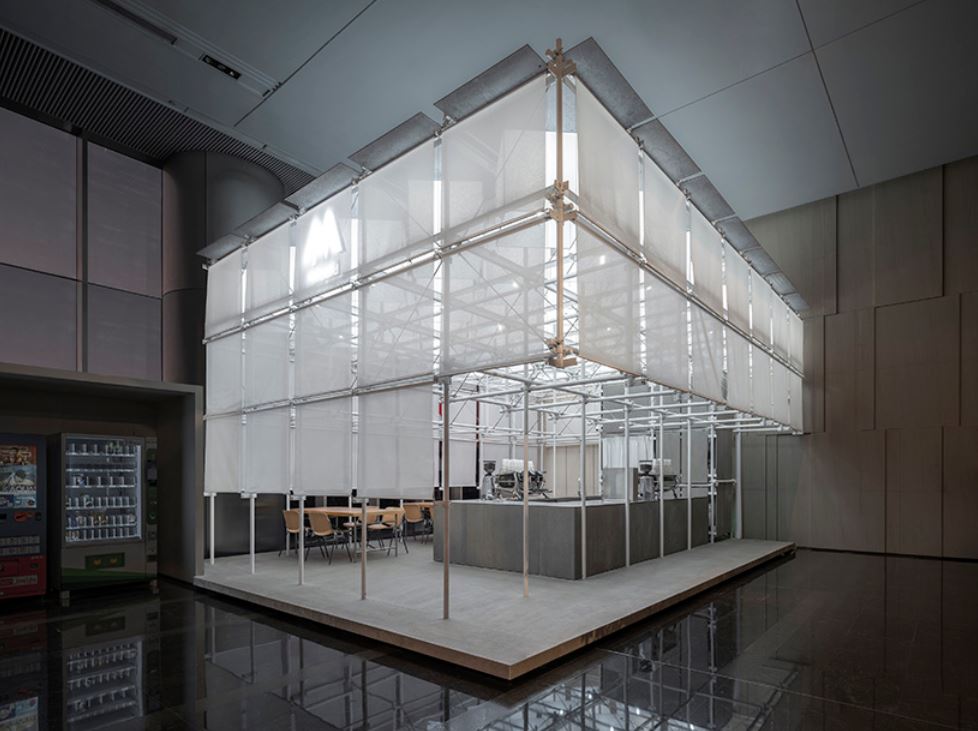
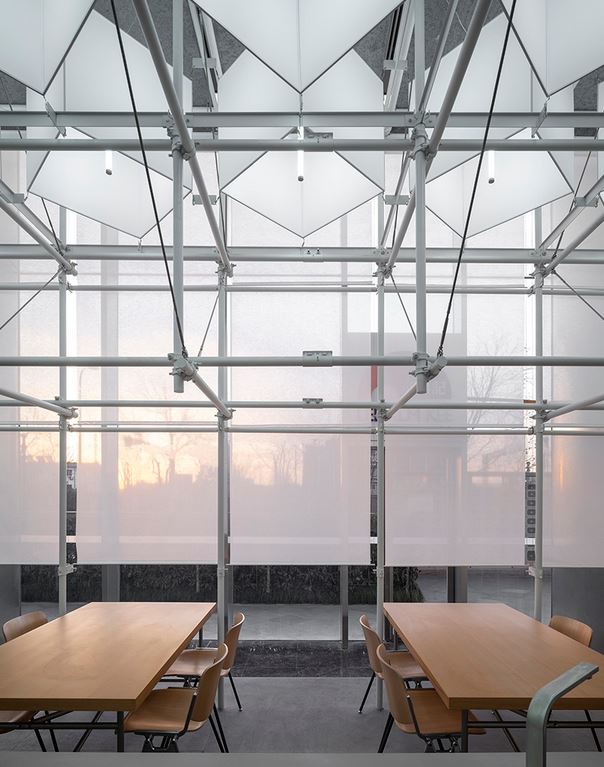
M Pavilion by Dazhou and Associates
The use of scaffolding allowed the studio to rapidly construct the coffee shop, restricting the construction process to just 10 days. The pavilion’s translucent skin wraps around the structure and creates a contrasting effect with the heavy volume of the office building. Surprisingly, a scaffolding that normally brings unfriendly feelings and is associated with something temporary and shabby helps to generate a warm, relaxed space, where employees could take a break from the working atmosphere of the office space.
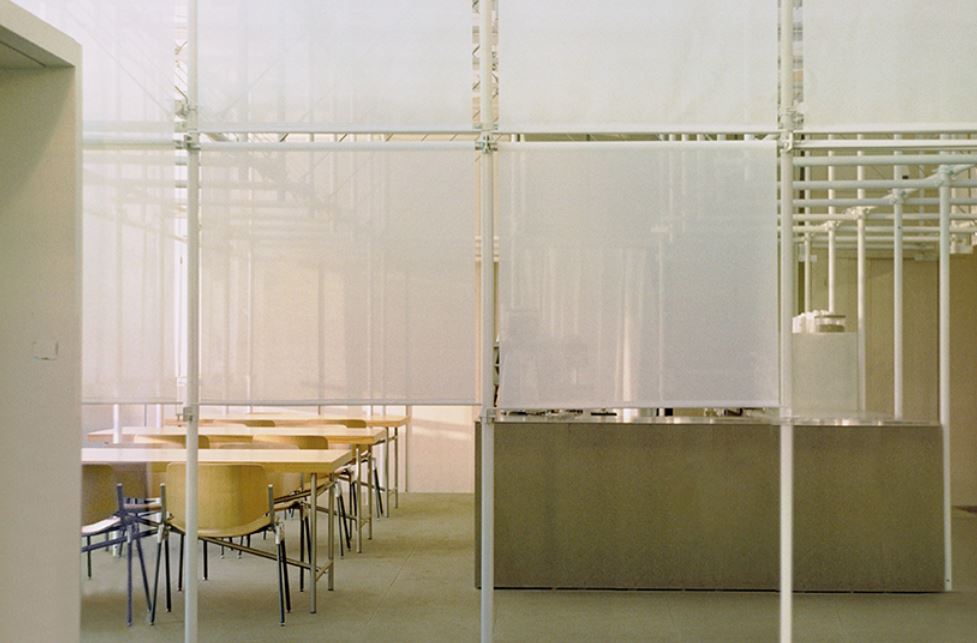
M Pavilion by Dazhou and Associates
The sunlight is filtered by the translucent curtains both early in the morning and when the sun sets. The space is filled with warm light that shines on people passing by and attracts office workers. In this way, ‘M pavilion becomes a temple of light,’ according to the studio.
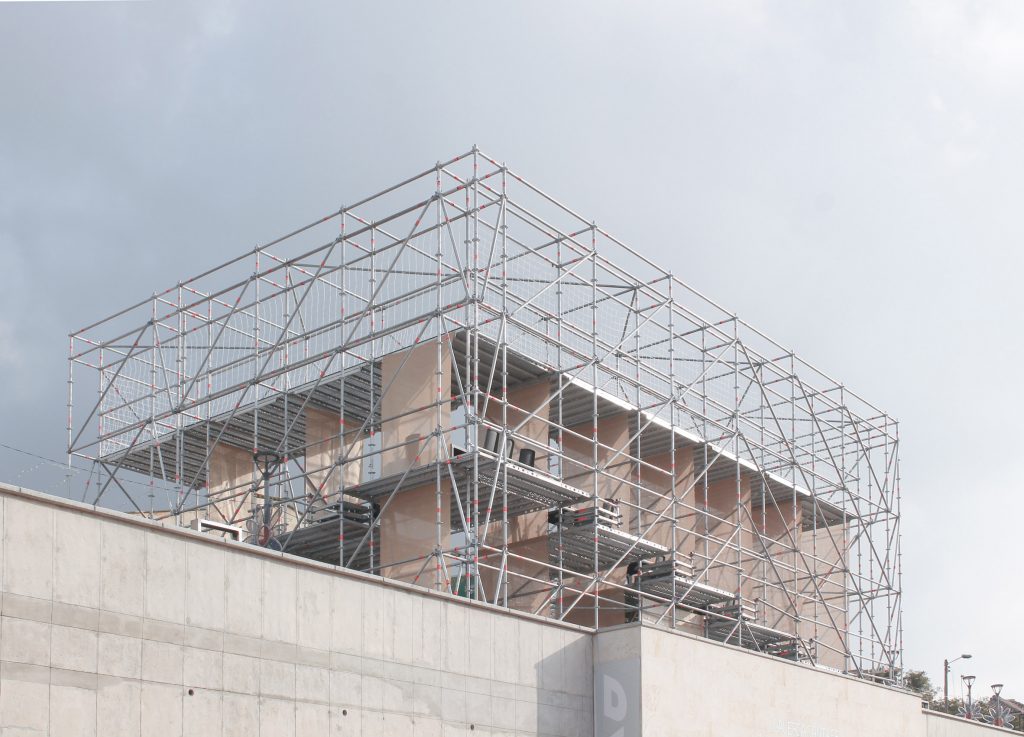
La Concordia: Amphitheatre by Colab-19 (also header image)
Architecture collective Colab-19 co-founded by German Bahamon and Alejandro Saldarriaga during the pandemic, despite living in London and Bogotá respectively, has built a multi-storey open-air theatre out of scaffolding. The project sought to help Bogotá’s businesses during the coronavirus crisis offering them a way for businesses to stay open. Called La Concordia: Amphitheatre, the structure could be used to host everything from outdoor dining to film screenings and theatre.

La Concordia: Amphitheatre by Colab-19
Bogotá is a city that has been gravely affected by the pandemic, since the vast majority of the population cannot work from home. This has led to an internal socio-economic crisis where several sectors, such as restaurants, have been gravely affected, leaving thousands of people unemployed.
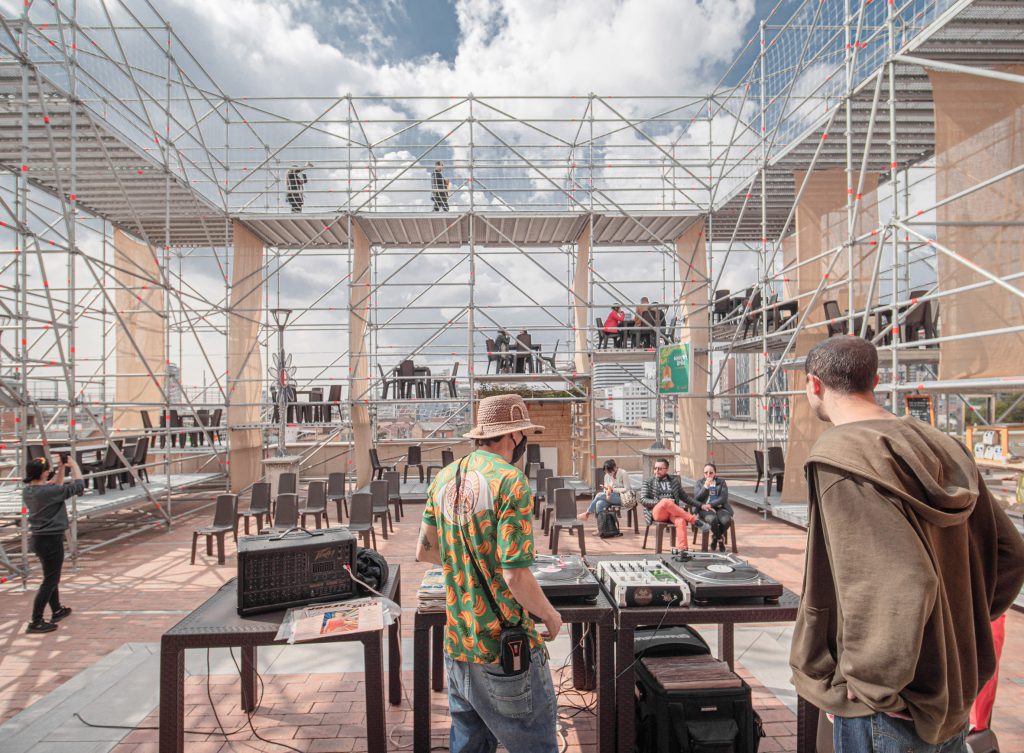
La Concordia: Amphitheatre by Colab-19
The duo used scaffolding because it is fast, low cost and easily accessible as a construction material. The U-shaped structure is arranged over three levels, with individual platforms intended for social-distanced dining on the lower levels and a viewpoint on the top. In the middle, a semi-closed courtyard space is created, which can be used by performing artists.

La Concordia: Amphitheatre by Colab-19
Aiming to soften up the industrial and cold scaffolding, the architects have introduced textile into the interior. Sheets of yute made from natural fibres traditionally used to make sacks for coffee and potatoes in Colombia are suspended from the scaffolding to divide up the dining booths and create a more welcoming experience for diners.
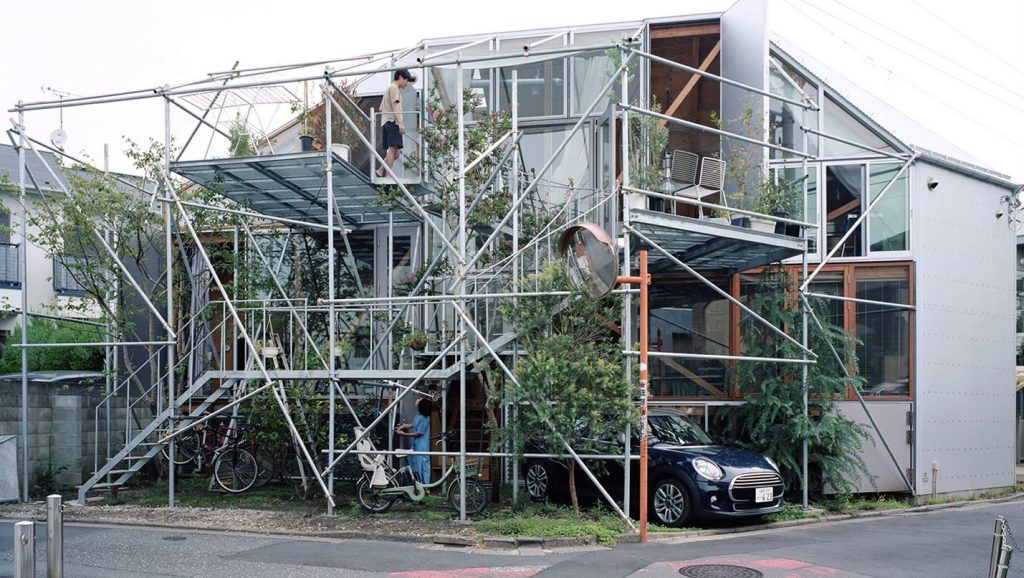
Daita2019 by Suzuko Yamada
Japanese architect Suzuko Yamada has utilized a scaffold to connect a three-storey home in a residential area of Tokyo to its garden. Named Daita2019, the structure of steel pipes and platforms can be adapted according to the owner’s needs. The whole house is clad in sheets of corrugated metal, save only for the side that is facing the front yard.
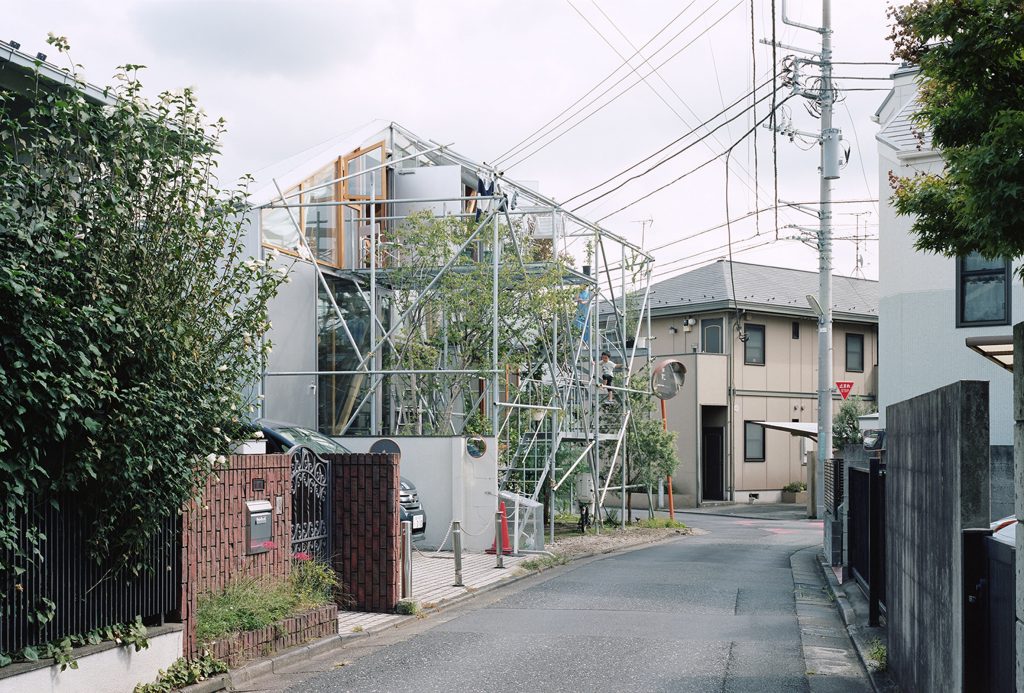
Daita2019 by Suzuko Yamada
The design of the house has been inspired by the architect’s travel to the Rwanda forest where wild mountain gorillas improvise their houses with no walls or roofs among dense trees. The house is comprised of layers of linear materials and objects shaping various depths.
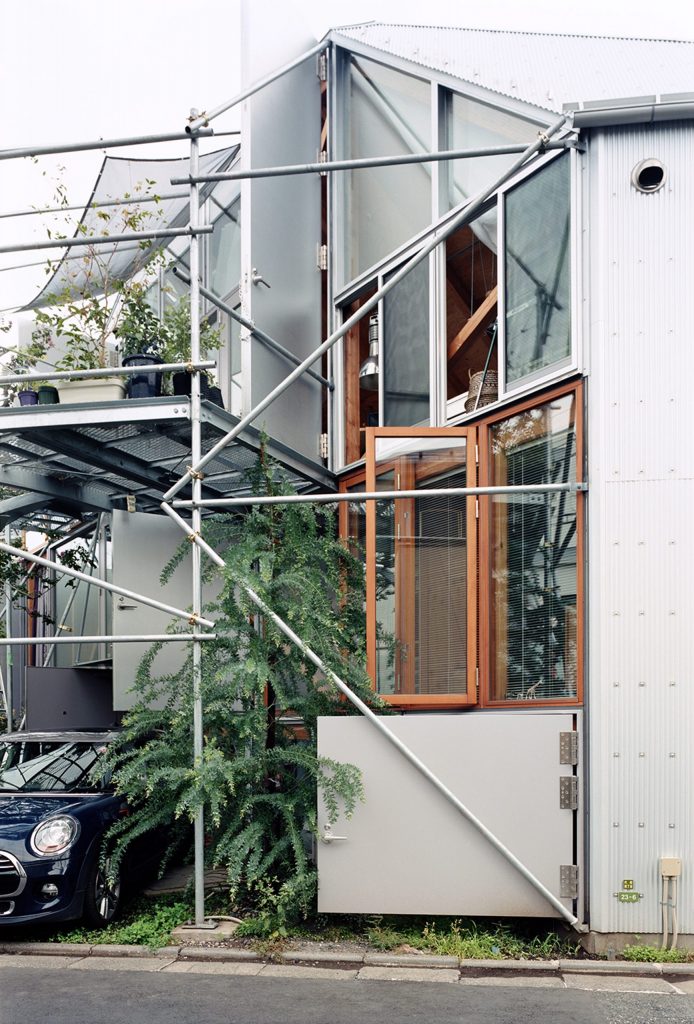
Daita2019 by Suzuko Yamada
Structural materials are exposed so that joints and bonded parts can be seen from the side. There is no wall between the house and its garden, but a composite of windows and joinery assembled together.
In addition to structural elements, which include timbers, steel, pillars and beams of single pipes and bracings, there are staircases, balustrades, window frames, furniture, curtains, books, clothing and other sundries, trees, pot-plants, bicycles, a watering pot, shovels, and moreover, a huge amount of books, videotapes, DVDs etc.
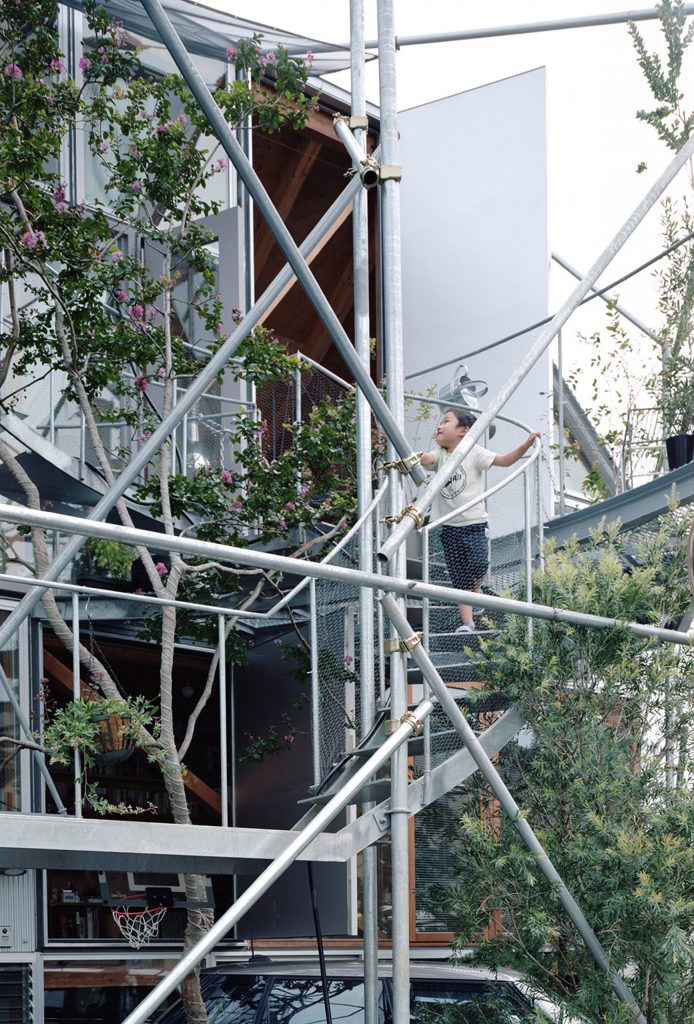
Daita2019 by Suzuko Yamada
Yamada extended the living space and the terraces that serve as platforms for harvesting for plants in the garden, put a staircase around trees that require regular pruning, and laid a catwalk by the road along the fence where vines grow, within the frames of steel pipes.
Due to the cost, maintainability, future possibility of expansion and reconstruction, the interior structure is crafted of wood, while the exterior is made of steel. Single pipes can be easily assembled and disassembled by clamps, so it is possible to customize the structure according to demand of daily life.